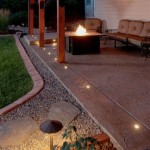Essential Aspects of Outdoor Photography Lighting Techniques
Outdoor photography offers a vast and dynamic canvas for capturing stunning images, but mastering the art of lighting is crucial. Understanding the relationship between natural light and your subject allows you to create visually captivating photographs that evoke emotion and convey a narrative.
Here are the essential aspects of outdoor photography lighting techniques to help you elevate your craft:
1. Golden Hour and Blue Hour
The golden hour, around sunrise and sunset, and blue hour, shortly after sunset and before sunrise, offer some of the most flattering lighting conditions. The warm, diffused light during the golden hour enhances textures and creates a sense of warmth and nostalgia. The cool, ethereal light during blue hour invites dramatic and evocative compositions.
2. Backlighting
Backlighting occurs when the light source is positioned behind the subject. This lighting technique creates a silhouette or rim light around the subject, highlighting its shape and texture. Backlighting is particularly effective during sunsets or with translucent subjects like flowers or leaves.
3. Side Lighting
Side lighting, where the light source is positioned perpendicular to the subject, sculpts the subject's form and creates dramatic shadows. This lighting technique adds depth and dimension, emphasizing the subject's contours and textures. Side lighting is ideal for capturing dramatic portraits or architectural details.
4. Fill Lighting
Fill lighting is used to reduce harsh shadows and create a more balanced exposure. A reflector or a secondary light source can be used to fill in the shadows and bring out the subject's features. Fill lighting is particularly useful in high-contrast situations, such as bright sunlight.
5. Natural Reflectors
Natural reflectors, such as white walls, bodies of water, or light-colored surfaces, can bounce light onto your subject and create more flattering lighting. Using natural reflectors is an effective way to soften harsh shadows or add a subtle glow to your subject.
6. Artificial Lighting
In certain situations, artificial lighting may be necessary to supplement or control the natural light. Using portable flashes or LED lights allows you to create custom lighting setups and achieve specific effects, such as highlighting details or creating dramatic shadows.
7. Experimentation
One of the keys to mastering outdoor photography lighting techniques is experimentation. Try different lighting angles, positions, and modifiers to see how they affect the mood and aesthetics of your images. Experimentation allows you to discover new perspectives and create unique and captivating photographs.
Remember, outdoor lighting is a dynamic force that can be harnessed to enhance the visual impact of your photographs. By understanding these lighting techniques and experimenting with them, you can create stunning images that capture the beauty and essence of the natural world.

Shooting Outdoors Erik Valind On Headshots In The Park
Indoor Outdoor Lighting Setups Simple Diagrams For Learning Photography

Creative Lighting Techniques For Portrait Photographers Rangefinder

How To Mix Ambient Light And Fill Flash For Outdoor Portraits

Photography Lighting Tips Create A Photo Studio Anywhere

The Best Lighting For Outdoor Photography Focus

Portrait Photography Work Neeta Shankar Private Limited Candid Wedding And Lifestyle Photographer

Westcott University Real Deal Review Quick Portraits With The Rapid Box Duo Studio Photography Lighting Portrait Setup Techniques

11 Outdoor Portrait Photography Tips For Easy Shots

Lighting Set Ups Portrait Photography Essentials Outdoor
Related Posts







